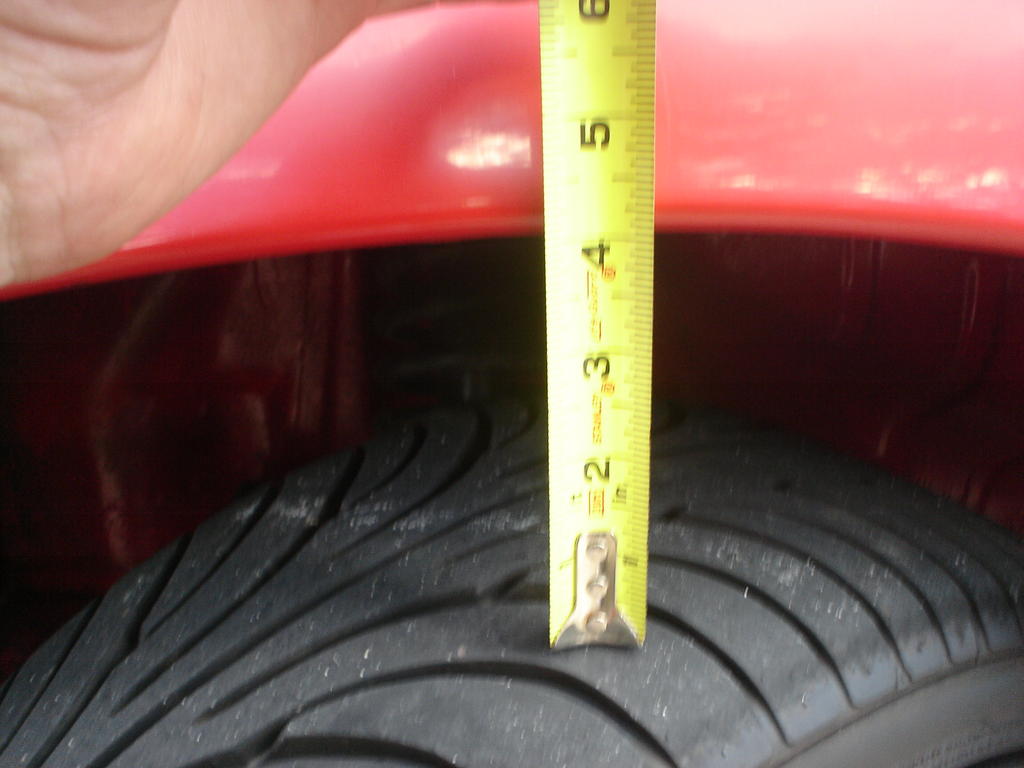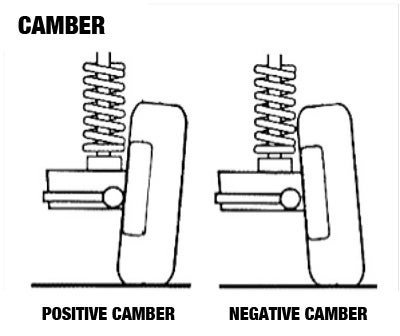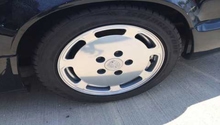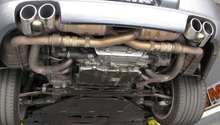Porsche 928: How to Align Your Tires
Just because the steering wheel is straight doesn't necessarily mean the car is going to follow in that direction. Wheel alignment is critical for proper suspension and the well-being of the tires. Here's how to check the alignment of your 928 and make adjustments if necessary.
This article applies to the Porsche 928 (1979-1995).
Wheel alignment is extremely important on your Porsche 928 for a number of reasons. It helps make sure your tires wear evenly, makes sure your suspension isn't subjected to unnecessary wear, and, most importantly, ensures that your car is going in the direction you want it go to at all times. Most people overlook getting their cars properly aligned because, unless you know what to feel for, it's hard to tell while driving your car if the alignment is off. It normally takes precision equipment to check the alignment of a car plus being knowledgable of the theories that go along with suspension operation.
Most shops that perform alignments are equipped with very expensive equipment that helps them to knock out alignments on a variety of different vehicles fairly quickly so they can maximize how much they make on each alignment. This equipment has the ability to measure different points of the vehicle and determine whether or not the wheels are essentially pointed in the right direction in relation to the car itself. But let's say you wanted to perform your own alignment or even wanted to give yourself the ability to perform alignments while at the track far away from an alignment shop and their equipment. Is it possible that you could buy or even make your own alignment equipment that could perform the job well enough? The answer is yes.
There are a few examples of ways to perform this kind of job yourself. This article will cover an example of how you can make your own alignment tools to perform the job or buy pre-made alignment tools so that you can get an accurate alignment without taking your car to the shop.

Before venturing down the road of performing your own alignment, you want to make sure that you have a complete and thorough understanding of how suspensions work, especially on the car you will be performing the alignment on. This is the kind of task where if you don't get it right, you could do some serious damage to your car and could potentially injure yourself or others. With that being said, if you think you are experienced enough to tackle this kind of a job it would be a great thing to add to the list of your capabilities and get you even further involved with the maintenance and upkeep of your 928.
(Related Discussion: Why the Porsche 928 Suspension is Different - Rennlist.com)
Purchasing Professionally Made Tools
When it comes to purchasing the tools to perform your own DIY alignment, there is one company that has been doing it for quite some time. Smart Racing Products has been developing and selling equipment to do your own alignment accurately for many years. Their equipment is especially great when it comes to being able to perform an alignment at a place like the track where it might not be convenient to get to an alignment shop.
Their tools can be purchased from a number of different distributors or even straight from their website. Their tools are actually the equipment of choice for a lot of professional race teams and shops that need to perform alignments on cars and want very specific alignment specs.

Another option for purchasing your own wheel alignment tools is a company called Intercomp. They make a bubble Caster and Camber gauge that is really easy to use. They also make turn plates that will help in making a DIY alignment a lot easier. Remember, your alignment will only be as good as the tools you use to complete it.
Related Sites:
- A Short Course on Wheel Alignment - Carparts.com
- Quick Check of Porsche 928 Wheel Alignment - Rennlist.com
Like with most tasks that you perform on your car, there are many different methods to choose from when deciding on exactly how to go about doing an alignment. The best way to pick which method to go with is to get a good understanding of what is involved in each one, and then go with the one you feel the most comfortable with and have the greater understanding of.
The rest of this article covers the very basic steps you will need to go through to complete an alignment on your 928. Of course, each method might require a few different steps, but for the most part it will follow the same route. These steps need to be performed in the correct order. This is because each one affects the other, and if you go out of step, then it will change the adjustment on the prior step.
Step 1 – Place vehicle on known level surface
This is very important. You must place the vehicle on a level surface so that each wheel is being affected the same. If you place the vehicle on an uneven surface or where the car is not sitting level, then the suspension will be different from one wheel to the next; when you go to make your adjustments, you will be setting them as if you were always driving on the road that way.

Step 2 – Adjust ride height
Before you make any alignment adjustments, it is important to make sure that the car is sitting at the ride height that you will be driving it around in most of the time. This is because any time the ride height is changed, the alignment characteristics change. This will also include putting the correct amount of air pressure in each tire and even placing weight in the car to simulate the weight of the driver. The fuel tank should also be full of fuel.
If you have just changed your springs or converted to coil-overs, it is best to drive around for about 100 miles to let the springs settle.

Step 3 – Adjust camber
When you look head on at the front of the vehicle, the camber adjustment on a wheel is easy to visualize. It's the adjustment that makes the top of the wheel point inward or, in some cases, outward. You have two ways to adjust camber, either positive or negative. Camber on the 928 is adjusted with the eccentrics on the control arms. You want to adjust the camber to whatever the stock specs are given by the manufacturer. The only time this would change is if you are seeking a different suspension setup for performance driving or have installed an aftermarket suspension setup and have been given different settings to go by.
You will be making the camber adjustment on both the front and rear wheels.

Step 4 – Adjust caster
Caster is a bit more difficult to visualize. Caster is the relation between the angle of the top of the strut and the center of the wheel. It is also adjusted either positively or negatively. On the 928, the adjustments are also made with eccentrics, but instead of them being on the control arm like with camber, they are on the ball joints. You want to adjust the caster to within factory specs, unless looking for certain suspension characteristics or trying to run a different suspension setup.

Step 5 – Adjust toe
Toe is another easy one to visualize. Toe is measured in two ways: toe in and toe out. Look down at your feet and imagine they are the front wheels of your car. Now go ahead and point your big toes at each other. This would be a representation of toe in. Now point them outwards, away from each other; this would be a representation of toe out. Toe greatly affects your steering and must be adjusted last because when you adjust camber and caster, it changes the toe. On the 928, toe is adjusted with the tie rods as it is in most other vehicles. Tighten it back when they're adjusted the way you want them.

Step 6 – Test drive
A test drive is very important after an alignment. This will be the biggest testament other than the measurements of whether you have performed it correctly or not. If you think for some reason it doesn't feel right, go ahead and double check your adjustments. If it comes down to it, you can always have an alignment shop double check your work just to make sure everything is good and to give you confidence that you've done it correctly.
Also keep an eye on the tire tread and wear pattern. This will also show if everything is within specs. Your tires should always wear evenly as long as they have the correct amount of air in them and your suspension is aligned properly.
Featured Video: DIY Alignment
Related Discussion and Site
- DIY 928 Wheel Alignment - Rennlist.com
- DIY Wheel Alignment - CarAndDriver.com






